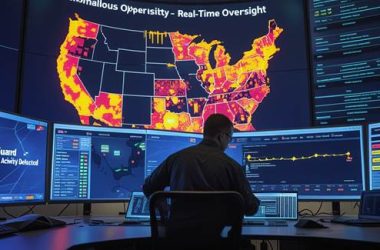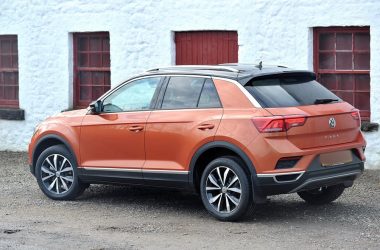The self-driving car is no longer science fiction. It’s idling at the curb, waiting for the green light. And honestly, our cities are not ready. For over a century, urban planning has revolved around the human-driven automobile—its needs, its failures, its sheer unpredictability.
But what happens when the driver is a hyper-aware, data-crunching AI? The very fabric of our urban landscape—the width of our lanes, the need for traffic lights, the oceans of asphalt we call parking lots—is about to be challenged. The transition won’t just be about the cars themselves; it will be a fundamental redesign of our public space. Let’s dive in.
From Parking Crater to People Place: The Land Use Revolution
Here’s a staggering fact: in many city centers, over a third of the land is dedicated to parking. Think about that. Valuable urban real estate, just storing metal boxes that sit idle 95% of the time. Autonomous vehicles (AVs) promise to turn this model on its head.
Why? Well, a fleet of shared, self-driving cars could be in near-constant motion. Drop you off at work, then pick up another passenger, rather than parking for eight hours. This drastically reduces the need for parking at the destination. But—and here’s the crucial part for planners—it increases the need for strategic pick-up and drop-off zones, or “mobility hubs.”
These hubs won’t be vast, barren lots. Imagine them as compact, well-designed curbside areas, integrated with public transit, bike-sharing, and green space. The land we free up from parking structures? That’s the real opportunity. We could see:
- Affordable housing on former parking garage footprints.
- Pocket parks and green corridors replacing seas of asphalt.
- Mixed-use developments that bring life back to underutilized spaces.
The goal is to undo the damage of car-centric planning and return land to people.
Redesigning the Right-of-Way: A New Street Hierarchy
The Dynamic Curb
The humble curb is about to become the most contested piece of urban real estate. Is it for parking? Loading? Drop-offs? Bike lanes? AVs will require what’s called dynamic curb management. This means the use of a curb can change based on the time of day or real-time demand. A loading zone in the morning could become a passenger pick-up zone during rush hour, all managed digitally.
This requires smart infrastructure—sensors, digital signage, and pricing mechanisms—to manage the flow. It’s a complex dance, but it maximizes efficiency in a way static curbs never could.
Do We Still Need Traffic Lights?
This might sound futuristic, but it’s being tested: intersections without traffic lights. When AVs can communicate with each other and the infrastructure (V2X communication), they can coordinate their movements seamlessly, like a school of fish flowing through an intersection without stopping.
The potential benefits are huge. Smoother traffic flow, reduced emissions from idling, and, honestly, the near-elimination of intersection-based accidents. The challenge, of course, is the transition period. How do you mix human drivers, pedestrians, and cyclists into this high-speed, non-stop ballet? It’s one of the thorniest problems in autonomous vehicle infrastructure planning.
Prioritizing People, Not Just Cars
There’s a real danger here. If we get this wrong, we could just end up with more efficient traffic jams. A flood of empty AVs circling the block to avoid parking fees could clog our streets worse than ever. The planning response must be to actively prioritize sustainable and active modes of transport.
Autonomous vehicles should be integrated as the last-mile solution, not the whole journey. A well-planned city will use AVs to feed people into its high-capacity transit backbone—trains, trams, and buses. This means designing those mobility hubs we talked about to be truly intermodal, making it effortless to hop off a bus and into a shared AV to get to your door.
Furthermore, narrower lanes (since AVs can drive more precisely) mean we can reclaim space for wider sidewalks, protected bike lanes, and outdoor dining. The street can become a destination again, not just a conduit for metal. It’s about designing for the human scale, not the vehicle scale.
The Data Dilemma: Planning in the Digital Age
Modern urban planning for AVs is fundamentally about data. These vehicles generate terabytes of information about traffic patterns, road conditions, and trip origins and destinations. For planners, this is a goldmine. It allows for evidence-based decisions, predictive modeling, and real-time management of city systems.
But with great data comes great responsibility. Who owns this data? How is privacy protected? How do we ensure that this new mobility system is equitable and doesn’t just serve the wealthy? These are not just technical questions; they are core urban planning and policy challenges. Cities need to establish clear data-sharing agreements and governance models now, before the technology outpaces our regulations.
A Glimpse at the Road Ahead: Phased Implementation
This transition won’t happen overnight. It will be messy and iterative. Here’s a potential roadmap many cities are considering:
| Phase 1: The Foundational Layer | Deploying sensors and communication infrastructure. Designating pilot zones for AVs. Updating zoning codes to address curb management and reduced parking mandates. |
| Phase 2: The Mixed-Fleet Era | AVs and human-driven cars coexist. This is the most complex phase, requiring robust safety protocols and clear signage for human drivers. Dynamic curb use becomes critical. |
| Phase 3: The AV-Dominant City | With a majority of trips handled by AVs, radical redesigns become possible. Intersections are re-engineered, lane widths are reduced, and large-scale land reclamation projects begin. |
It’s a long journey. And it requires a shift in mindset from planning for static objects (parked cars) to managing dynamic flows.
The Ultimate Goal: A More Livable City
So, what’s the point of all this? It’s not just about getting from A to B a few minutes faster. The true promise of autonomous vehicle infrastructure is the chance to rebuild our cities for people.
Imagine quieter streets because electric AVs are the norm. Cleaner air. Safer routes for kids walking to school. Vibrant public plazas where a parking garage once stood. The technology is just a tool. The real work—the creative, human-centered work—lies in how we choose to wield it. The blueprint for the 21st-century city is being drafted now, not in steel and concrete, but in data, policy, and a renewed vision for shared public space.








